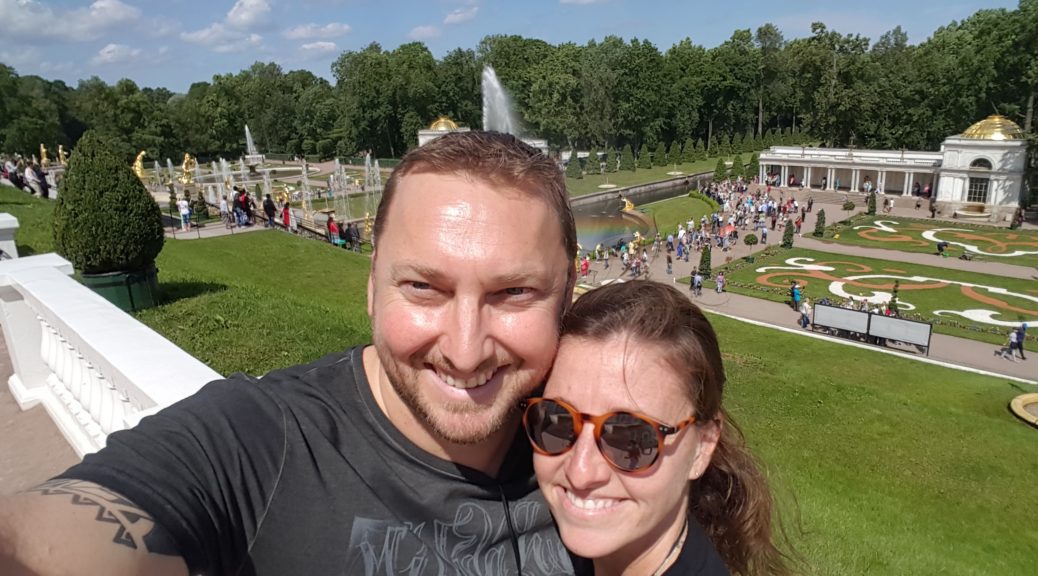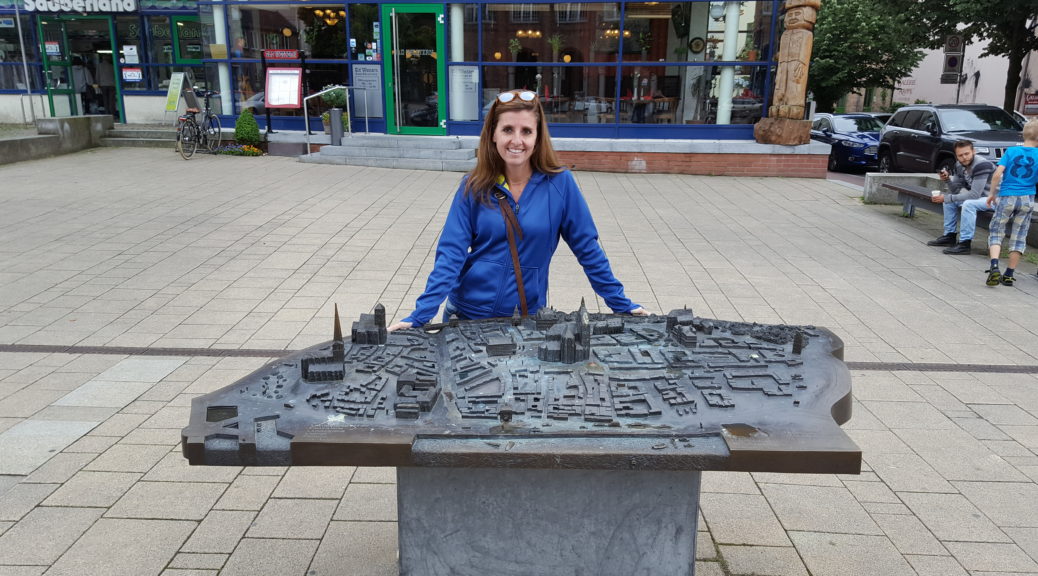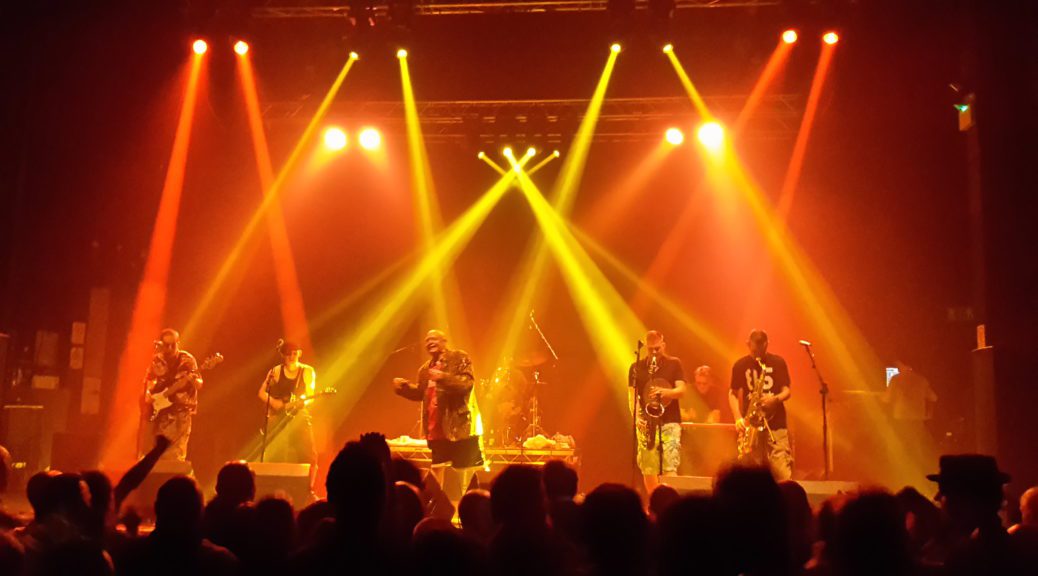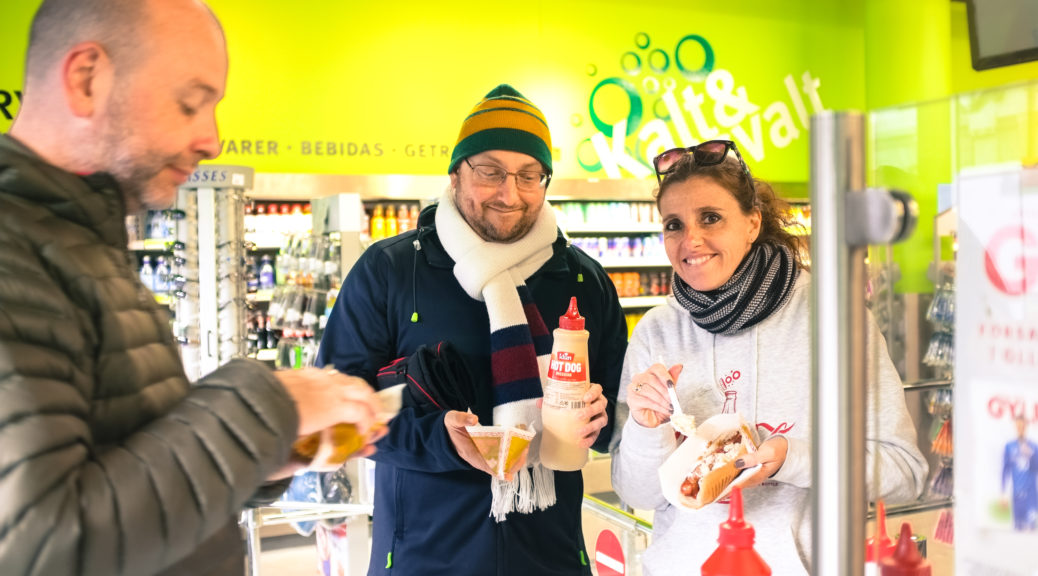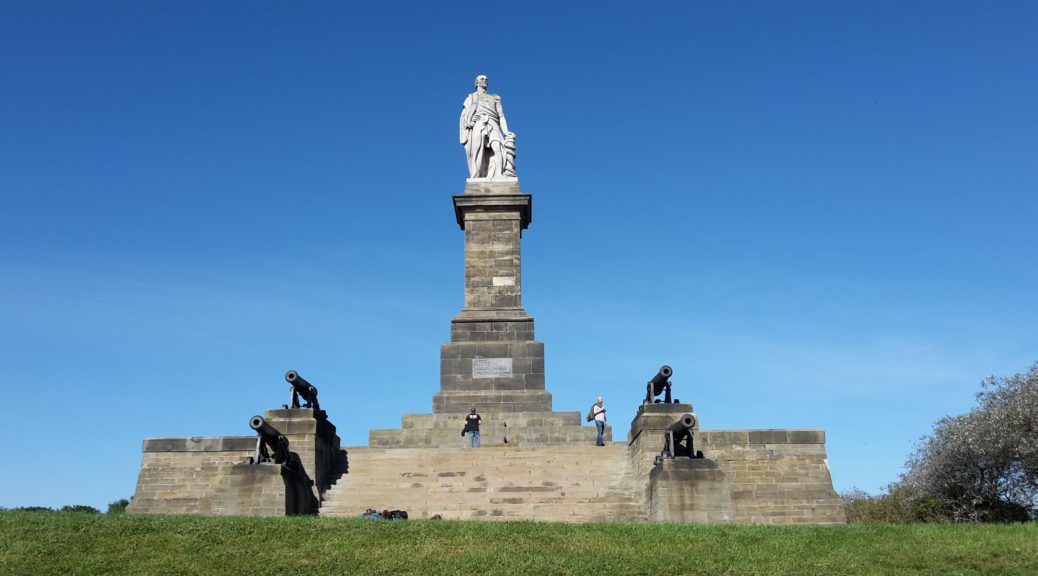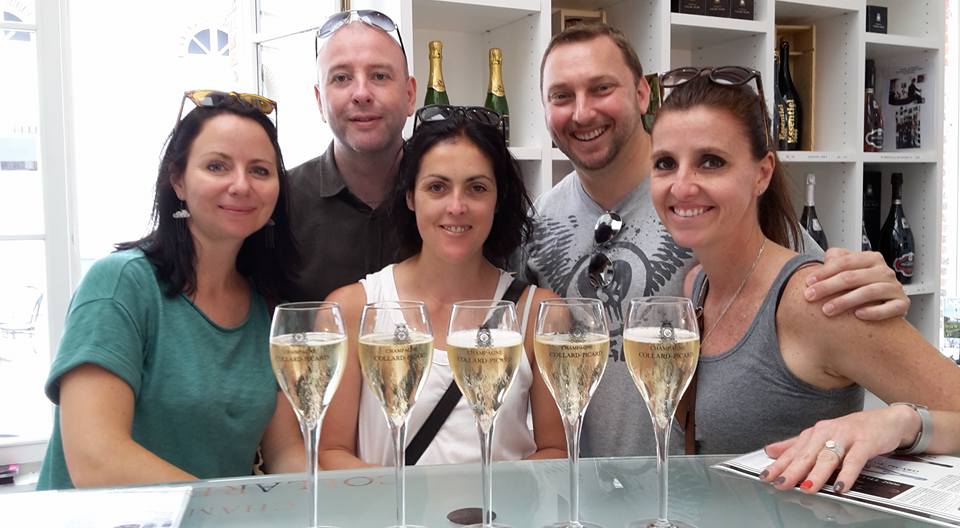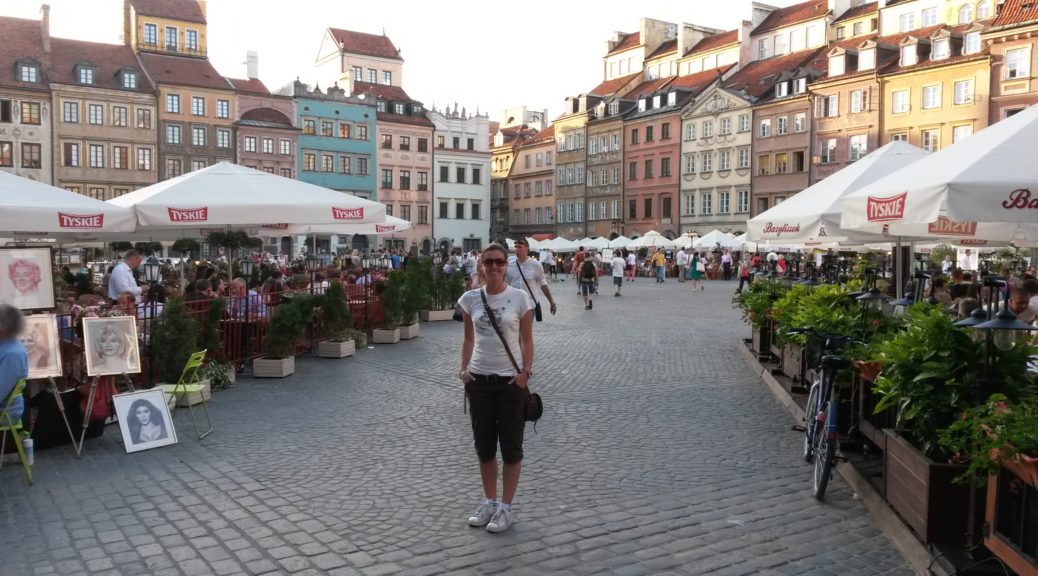BALTIC CRUISE | ST PETERSBURG – CITY TOUR
21 June 2016
Our second day in St Petersburg started quite the opposite to the first, where we had visited Peterhof. Both of us had a restless night, fearing we’d oversleep… and got up half an hour earlier than planned (which was *early* seeing as we had to be on the bus by 07h15!)
Fortunately, on this cruise there was no such thing as too early for breakfast and, in fact, the main dining room was ready and waiting to serve us. The main dining room offered a combination of buffet and table services, with waiters at the ready to bring you a plate of your own design.
That seemed – even after the opulence of St Petersburg – a bit too decadent to be practical when there was a buffet right there, so we dished for ourselves and were soon happily munching our gravlax/bacon/eggs/sausage etc, at leisure with plenty of time to spare. As was typical, people at the table complained at how long their food was taking (no more than a few minutes), but they were damned if they’d get up and serve themselves!
Passport Control was even quicker than the previous day as they just checked the existing stamps, and we were among the first to meet on the platform, before the coach had even arrived.
The drive into town seemed that much quicker the second time around – possibly because more familiar – so we were anticipating the destination with some sense of the route (you know how the way home always seems quicker than the way to a new place).
Our first familiar sight was the Neva River, the main waterway in the 6 islands that make up St Petersburg. We’d passed over it the previous day; now we stopped alongside it to cash in a wish by rubbing the brass gryphon heads that sat alongside the Egyptian sphinx statues.
This was also an ideal vantage point to get a good look up and down the wide river. It was obvious to see why it was called the City of 1000 Palaces. St Petersburg was nothing short of magnificent with the grandiose facades along the riverfront of a bygone era where bigger was better and detail essential. No cost was spared in the elaborate designs and adornments that distinguished one mansion from the next in the single continuous row. Even the exterior paint job was meticulous, with a pretty consistent palette of dusky pastel colours with the slatted columns painted white.
We made another roadside stop further down the river at the Rostrums. These were tall terracotta twin columns with ships’ props embedded. At the base of each was a huge statue of a Poseidon/Neptune type chap. This section of the river was even wider (apparently it was a kilometre wide – in the middle of town! – at some points) and the row of riverfront palaces as grand and consistent, side-by-side, as far as the eye could see in every direction. This city was nothing short of awesome, in every conceivable most literal sense of the word!
Even the roads were broad, which is unusual for an olden times city. Bearing in mind it was by now around 08h30 on a workday, traffic was thick, but not unmanageable (especially for us, long-suffering Jo’burg drivers). I suppose everything is relative though because even in the 1800s there was considered to be too much carriage traffic… but then the solution was simple: only nobleman could use the roads. That wouldn’t fly nowadays where it’s all for one and one for all and the parking is even free to be fair to everyone.
The next stop was St Isaac’s Church. The previous day’s tour had ended with a visit to a souvenir shop. We’d been assigned 20 minutes to shop but since Uda had flippantly pointed out some pretty notable sights through the window a few blocks earlier, we sprinted down the street retracing our bussteps to get a photo of the church, Palace and statue she’d printed out. Little did we know that we were returning to these the next morning!
The Church was a behemoth of a building, able to seat (well, stand, since Russians stand while worshipping) 14,000 people! It was adorned within an inch of its life and surrounded by the more of the same massive mansion block buildings in every direction. Words cannot describe the scale of everything in this city to the point that your imagination can form a true picture from my words!
The statue across the road from the church was of Nicholas I, Catherine the Great’s grandson. The (magnificent) palace behind it was built for his granddaughter, Maria, who refused to live in it because she couldn’t bear the thought of the view being her grandfather’s ass. Proper First World problems.
The big excursion for the morning was a visit to the Hermitage Museum. It kicked off with a bang when even the entrance Baroque staircase was a sight to behold. The decoration accent colour was gold. As in gold leaf, not golden-coloured paint. Not my idea of a good time, but gives you an idea of the reckless abandon with which construction and decorating was undertaken. It was mostly the Empresses (Catherine I, Anna, Elizabeth and Catherine the Great) that were credited with the elaborateness and, as Christian said, it was easier back then when the Csar/ina had complete control over all the wealth and could spend on whatever they chose. He further said it was a good thing too because otherwise we wouldn’t have these magnificent things to admire now, in a world that was a lot more selective in its opulence.
The Hermitage tour kicked off with the Winter Palace, built for Elizabeth but used first by Catherine the Great. Catherine ceded to Alexander I, her favourite grandson. Then his brother Nicholas (from the statue) became Emperor. It was a tricky story to follow.
“Hermitage” literally means “place for solitude” since the buildings were never meant to be public. Ironic for a building now this busy – as in queues out the door, down the street, around the corner, across the road and through the park! Fortunately we were there as it opened and had a pre-arranged group ticket so were just ahead of the rush.
The Small Hermitage is 2 buildings running parallel with a garden between them. This is where Catherine housed her art, which she was known to have never liked (but collected because collecting was fashionable). Since the art was hung as her private collection in her place of solitude, she is known to have said “only me and the rats can see it. And I think the rats like it more”
It was a formidable collection of legendary artists – so legendary that even I know them and I know less than nothing about art!
The first masterpiece I recognised was Rembrandt’s “Return of the Prodigal Son”, which he is credited as painting in 1669, the year he died, but had etched 30 year’s prior so really was a life work. This painting was in a whole section of tens of Rembrandt originals… and I now mustered an appreciation for his talent. While I was sure one is supposed to appreciate brushstrokes, paint texture and whatnot, the ones that appealled to me were where the paint was smooth and the likeness so good the painting could be a photograph.
The Hermitage also housed 2 of the only 14 Da Vinci originals that can be found outside of Italy, both of Madonna and Child (the religious icon lady, not the singer).
The full tour was about 2 hours and took us through the Winter Palace, Small / Old / New Hermitages and the Hermitage Theatre. We also saw some of Rafael’s paintings and a Michaelangelo sculpture, so were only a Donatello short of a set of turtles!
The next stop wasn’t far from the Hermitage, but took some effort for a bus in the traffic. We found a good drop off point outside Michael’s Palace – another magnificent hunk of building, which cost 7 million Roubles to build in a time when the entire social budget was 700k!
Our destination was the Church on Spilled Blood, which was located on the spot of assassination of Alexander II (son of Nicholas I). He was very popular because he abolished serfdom and made military conscription compulsory for all (previously noblemen were exempt). He also encouraged Finland’s autonomy, liberated Bulgaria and sold Alaska to the USA. Obviously though you can’t make an omelette without breaking a few eggs and thus this was the 8th attempt on his life – and was aimed at overthrowing monarchy. Terrorists threw a bomb under his carriage. He wasn’t injured but the General next to him died immediately. The Csar – being the good guy he was – got off his carriage to see if anyone was hurt or needed help and the assassins got him with a second bomb. He was badly injured and died 2 hours later in the Winter Palace.
Alexander’s son commissioned the church at the place of his death in his honour. He was so popular that the nobles donated a million Roubles and the common people another half bar. 700 square metres of mosaics didn’t come cheap! … Although they did save a fortune on pews since Russians pray standing.
We were running a bit ahead of schedule so Uda called ahead to see if we could go straight to lunch. We were initially batted, but the host venue called back about 5 minutes later saying we could come in 15, so we took a walk down to Nevsky Prospekt (the main shopping street) to get better photos of the big church monument thing that commemorated the victory in the 1812 Napoleonic Wars.
Lunch was served at the Museum of Fine Arts. Based on how particular they were about our time of arrival and the fact that we were served at tables in the middle of the foyer, I surmised this to be a limited offer for which they closed the museum over lunch.
Salad was already plated at our place settings, with caviar canapés and bread on the table for self-service. Then followed a bowl of borscht and a plate of chicken stroganoff. Strawberry sorbet to close. It probably was a treat of a meal… but we’d been spoilt by the restaurants on the cruise ship. We may never be able to eat normally again!
Last on the itinerary was the Cathedral of the Holy Apostles Peter and Paul, another baroque construction, consecrated in 1733. This was the first main cathedral built in St Petersburg, as a memorial to their 18th century military glory and is the burial place for the Imperial House of Russia.
Peter the Great’s daughter Catherine had been buried in 1708 in the wooden church that stood on this spot and which laid foundation for the creation of this Cathedral to house the Royal tombs of the Romanov Imperial House, and which was currently the final resting place of 46 members of the dynasty.
We were starting to piece together the story and from what we could tell it was:
- Peter the Great (unified Russia, moved capital to St Petersburg)
- Catherine I (Cinderella)
- Peter II (Peter the Great’s grandson, last of the male direct line of Romanovs)
- Anna (Peter the Great’s niece)
- Ivan (Anna’s niece’s infant son, ruled for a year… as an infant)
- Elizabeth (seized throne from Ivan; Peter the Great’s daughter)
- Peter III (Anna’s nephew; assassinated within 6 months by his wife, Catherine the Great)
- Catherine II (Catherine the Great, ruled 34 years)
- Paul I (Catherine’s son; ruled 4 years, 4 months, 4 days, strangled in his bed)
- Alexander I (Paul’s son, ruled 24 years and died of typhus)
- Nicholas I (Alexander’s brother, ruled 30 years and died of pneumonia)
- Alexander II (Nicholas’s son, assassinated at Church on Spilled Blood)
- Alexander III (Alexander II’s son)
- Nicholas II (Alexander III’s son, married to Alexandra)
The Romanov line ended with the October Revolution where the Bolsheviks murdered Nicholas and his family so that there was no chance of returning to a Csarist regime. The whole family were buried unceremoniously at the time, but much later disinterred and brought to their own designated tomb in the Cathedral.
Quite a maudlin end to the day, but reaffirmed St Petersburg as a place rich in history and stories of great victories and great tragedies.
Driving out of the city once again, it was such a contrast of the beautiful elegant mansions built in the age of opulence versus the functional-to-a-fault grey compounds so obviously built by the Communists. Still enormous though, which seems to just be the St Petersburg way.
It was with regret that we said our goodbyes to St Petersburg as it grew smaller on what should have been the sunset, but of course wasn’t seeing as it was the longest day of the year, with darkness of less than 40 minutes, so the sun was still high in the sky at 8 o’clock at night!
